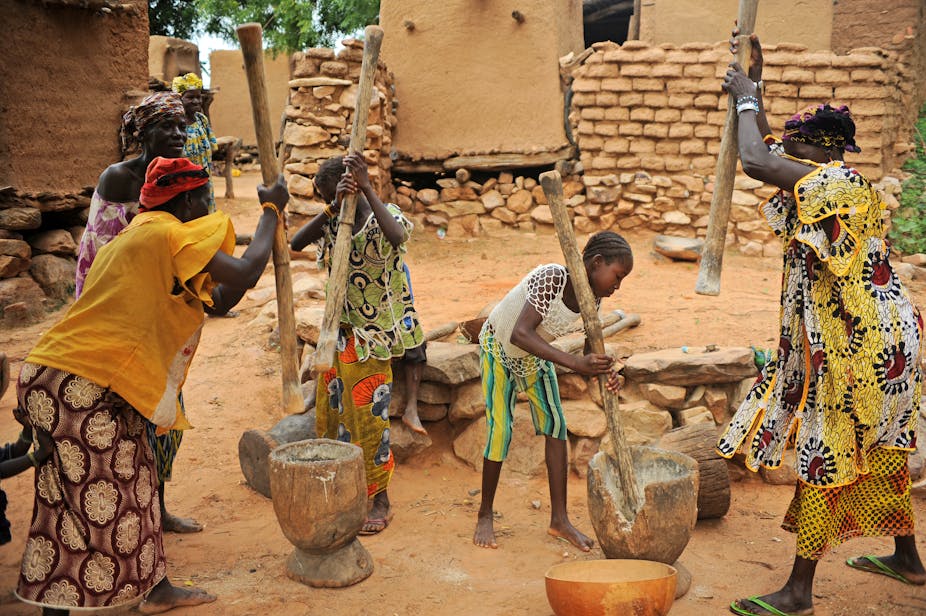African countries are hit by far fewer natural disasters compared to the rest of the world. But they suffer much more. For instance, in 2016 African countries were hit by 17% of natural disasters compared to other regions of the world, but ranked third in the number of people who died or were displaced (31.8 million).
Asian countries accounted for the most natural disasters (47%). While disaster mortality in Asia has been decreasing, it has been rising in Africa. There are several reasons for this. These include socio-economic and political factors, health, climate and geographical location.
High mortality rates in sub-Saharan Africa affect the region’s ability to achieve the Sustainable Development Goals (SDGs), formerly know as the Millennium Development Goals (MDGs). These goals focus on poverty reduction, access to basic healthcare as well as education and lower mortality rates. They’re a United Nations-led initiative aimed at ensuring that peoples’ basic needs are met in a sustainable way.
In 2015 the SDGs replaced the MDGs to frame the goals in a broader context. This move took into account the effect that environmental changes, such as climate change, may have on countries’ ability to achieve the goals.
There have been a number of studies on causes of mortality in sub-Saharan Africa, including malnutrition, vector-borne diseases such as malaria and sexually-transmitted diseases such as HIV-Aids. None, however, have focused on the impact of climate change on mortality.
The aim of our research was to understand the overall impact of adverse climate events on households – particularly death rates. Based on our findings we concluded that if sub-Saharan African nations are to reduce mortality, they must have a better understanding of the effect of climate change on mortality rates.
The climate may affect households directly – through drowning during floods, heat strokes and being buried under debris when houses collapse after storms. The indirect impacts could be through the spread of disease, such as when water becomes contaminated following floods. Risky sexual behaviour as an alternative survival strategy after floods have wiped out crops, for example, could lead to increased rates of HIV/Aids infection.
We investigated whether climate variability contributed to higher death rates in rural Kenya, Mali, and Malawi during 2008 and 2009. Our research found that cold snaps increased mortality in Kenya, but reduced mortality in Mali and Malawi.
Differences in geography and the general climatic conditions may explain the differences. Kenya’s topography includes mountainous regions, resulting in temperatures that can drop as low as 7.6 degrees celsius.
Mali and Malawi, on the other hand, are largely flat, with minimum temperatures that remain much higher, respectively at 19.6 degrees celcius and 13.24 degrees celcius. Excessive rain – which may lead to drowning and death – and droughts were associated with increased mortality in Kenya and Malawi. Droughts often exacerbate an already precarious food insecurity.
Disease also played a role. For example, adverse climatic conditions increased mortality in regions with high HIV prevalence, but reduced mortality in areas with high malaria prevalence. The decline in malaria prevalence could be due to the climate’s impact on breeding conditions for mosquitoes.
Our research shows that action is needed to reduce climate-related mortality. Interventions could include early warning systems, agricultural extension services and improved access to health infrastructure.
The research
Our analysis focused on rural Kenya, Mali and Malawi because no research has been done on the climate-mortality relationship in these countries.
We developed a climate-mortality framework, with the household at its centre. We asked the question: how was climate variability (heat waves, cold snaps, droughts, and excessive precipitation) associated with increased household-level mortality during 2008 and 2009 compared to a long-term climate-normal period (1961-1990).
In addition, we examined if climate effects on mortality were stronger in countries with higher prevalence of diseases like malaria and HIV.
Our results shed light on the impact of climate variability on mortality, independently and in combination with existing drivers within and outside the household. For example, we found that the risk of death was lower for households with less elderly members. This is because elderly people are more vulnerable to heat strokes than the younger cohorts. We also found that the risk was lower in households headed by a married men. This was possibly due to the fact that men have better access to resources.
Households with more educated members and those with access to electricity also had a lower risk of death. But the risk of death was higher in households with more migrant workers.
In the case of combined climate impacts, we found an interesting disparity: adverse climatic conditions increased mortality in regions with high HIV prevalence, but reduced mortality in areas with high malaria prevalence. This may be because the climatic change created unfavourable breeding conditions for mosquitoes.
What needs to be done
Many projects have targeted various causes of high mortality such as malnutrition and diseases such as malaria and HIV. But little attention has been paid to climate variability as a potential cause of excess mortality in this region.
Our findings should allow policy makers to add a climate lens to mortality reduction programmes in sub-Saharan Africa. This is important given that climate variability is projected to increase in future due to climate change. With more adverse climate events such as heat waves, cold snaps, droughts, floods, and storms, mortality rates in sub-Saharan Africa are likely to increase.
Early warning systems for floods and cold snaps could protect against these events in Kenya. As households in areas with high HIV prevalence suffer more from climate events, giving preference to districts with high rates of this disease when providing public health services would increase the effectiveness of these services.
As Malawi is particularly sensitive to droughts, programmes that build livelihood resilience could reduce the risk of death. These can include helping people reduce dependence on farms, improving access to agricultural extension services, distributing drought resistant crop varieties and installing irrigation systems.

